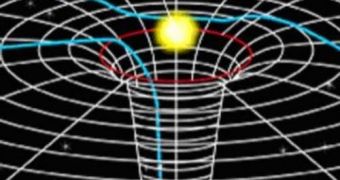When physicist Albert Einstein first developed his famous Theory of General Relativity (TGR), early in the 20th century, the physics world progressed considerably. The new-found knowledge eventually led to the creation of things such as the GPS network around the Earth, and helped astronomers explain space-time curvatures and the effects of gravity. However, reconciling this theory with quantum physics in a so-called Unified Theory of Everything (UTE) has proven to be extremely difficult. All attempts to do this have failed over the years, but now experts propose a new approach.
American researchers from the Texas A&M University set out to explore this option in two new scientific papers, published in the journal Physical Review Letters, as well as in the August 24th issue of the respected journal Physics. Their efforts were made to help physicists who were looking for a theory of quantum gravity (TQG) at the moment, which would essentially be in tune with Einstein's ideas, and thus form the theory of everything. The main issue with finding it is that experiments are difficult to set up.
For instance, after TGR was developed, astronomers and physicists had the opportunity to test the idea to the limit, until it was scientifically proven over and over again that Einstein was right. This is very difficult to do with quantum physics, as scientific investigations in this field are naturally prone to uncertainties. Recently, Lawrence Berkeley National Laboratory (Berkeley Lab) expert Petr Horava proposed a new model for quantum gravity, which had the advantage of being testable. Needles to say, his ideas received a lot of interest from the scientific community, ScienceDaily reports.
The Texas A&M team believes that Horava's model indeed connects the two theories together, but only at an unobservable scale, larger than the Universe itself. This conclusion may have vast implications for discovering the UTE, as it may provide scientists with a new starting point in their calculations. It remains to be seen how physicists will handle this new-found knowledge. In any case, once the UTE is achieved, we can expect a massive step forward in technology.

 14 DAY TRIAL //
14 DAY TRIAL //